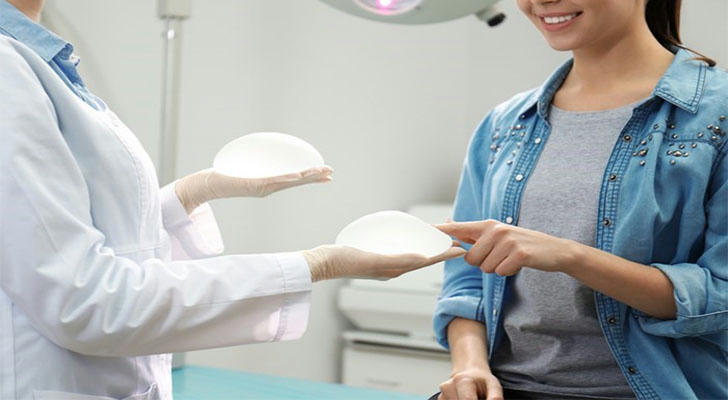Breast augmentation surgery myths and truths: Five things you need to know

Breast augmentation surgery is popular for its dramatic ability to boost self-confidence and improve your figure, but it also comes with its fair share of controversy. Despite the advancement of modern medical technology, misunderstandings about breast augmentation surgery still exist, affecting the public's perception of the surgery. This article will clarify five major myths and provide scientific facts to help readers make informed decisions.
Myth 1: Breast augmentation surgery is dangerous
Many people are concerned about the safety of breast augmentation surgery and believe that the surgery is high risk. However, advances in modern medical technology have significantly improved the safety of surgery. According to the American Society of Plastic Surgeons (ASPS), breast augmentation surgery has a low complication rate, and common risks such as infection, bleeding, or implant migration can be managed with effective post-operative care and prompt medical intervention. Renowned plastic surgeon Dr. Garth Fisher states: "For most healthy women, breast augmentation surgery is a relatively safe procedure with a high success rate. However, choosing an experienced surgeon and adequate preoperative evaluation are critical The prerequisite for ensuring the safety of surgery. "By choosing an experienced plastic surgeon and performing the surgery in a regular medical institution, the risk can be effectively reduced.
Myth 2: Breasts will look unnatural after breast augmentation
Another common misconception is that breasts will look unnatural after breast augmentation surgery. In fact, advances in modern breast augmentation technology and materials have made the surgical results more and more natural. Silicone implants have become so advanced in design that they provide a look and feel that is virtually indistinguishable from natural breasts. In addition, the choice of surgical method is also important. For example, using an underarm incision or inframammary fold incision can reduce interference with breast shape, resulting in more natural results. Some successful cases further prove this. For example, a 30-year-old woman chose silicone implants, and her breast shape after surgery was almost the same as her natural breasts. Her friends and family were unaware that she had undergone breast augmentation surgery.
Myth 3: All breast augmentation surgeries have the same effect
Many people believe that all breast augmentation surgeries provide the same results, but this is not the case. Variations in surgical outcomes are affected by several factors, including surgical technique, implant type, patient's physical condition, and physician experience. A personalized surgical plan is critical to achieving ideal results. Choosing the right implant type, such as silicone implants, saline implants, or fat grafting, and adjusting it to individual needs and physical conditions, can significantly improve surgical outcomes. Experts recommend that when choosing a surgical option, you have a detailed discussion with your plastic surgeon to determine what is best for you.
Myth 4: Breastfeeding is not possible after breast augmentation
Some women worry that breast augmentation surgery will affect their ability to breastfeed in the future. In fact, most women who have breast augmentation surgery are still able to breastfeed normally after giving birth. The key lies in the specific method of surgery and the location of the incisions. For example, an areolar incision may cause some interference with the breast ducts, while an underarm or inframammary fold incision will have less interference with the breast tissue. Experts point out that the position of the prosthesis is also an important factor affecting breastfeeding ability. Implants placed below the pectoralis major muscle generally do not directly affect breast tissue, while implants placed above the pectoralis major muscle may carry some risks. Therefore, discussing breastfeeding-related issues with your doctor in detail before surgery can help you choose a suitable surgical plan and preserve your breastfeeding ability to the greatest extent.
Myth 5: Breast augmentation effects are permanent
Many people believe that the results of breast augmentation surgery are permanent, but this is not the case. Although modern prosthetic materials are designed to be very durable, prostheses have a limited lifespan, usually around 10 to 15 years. Over time, prostheses may wear, leak, or harden, and may need to be replaced. In addition, the shape of the breasts may also change with age, weight fluctuations, pregnancy, and breastfeeding. Postoperative care is critical to maintaining the results of surgery. Regularly checking the status of your implants and breast health, maintaining a healthy lifestyle, and promptly addressing any discomfort or changes can help maintain optimal results.
in conclusion
Breast augmentation surgery is widely popular for its ability to boost self-confidence and improve your figure, but understanding the myths and truths about it is key to making an informed decision. By choosing an experienced plastic surgeon, customizing a personalized surgical plan, providing post-operative care, and maintaining a healthy lifestyle, you can effectively avoid common misunderstandings and achieve ideal surgical results. I hope the information provided in this article can help you better understand the reality of breast augmentation surgery and provide a reference for your decision-making.
